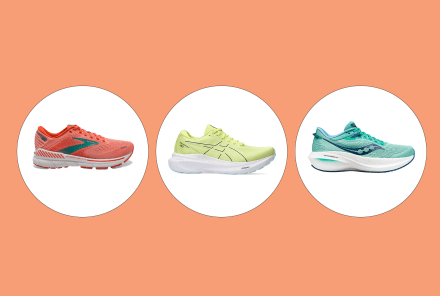Advertisement
Trying To Manage Your Weight In A Healthy Way? Give These 3 Little Habits A Try

When reaching a big goal feels impossible, you’re probably expecting yourself to do too much, all at once. Every journey towards a life-changing goal has its own unique set of frustrations, but what if it wasn’t about gritting your teeth and resigning yourself to a no-pain-no-gain approach? Thankfully, weaving small-but-impactful actions into your routine is a much more doable and effective route to take.
These simple daily habits can help you when you’re looking to lose weight or get healthier, says Allison Grupski, PhD, the Senior Director of Behavior Change and Strategies at WW. And, here’s the best part: “If weight loss is your goal, one of the top ways to achieve that is to persevere in the face of setbacks.” So don’t stress if you miss one of these for a day—focus more on your progress. Prioritizing these moves will make it easier to help you achieve your goals.
Put your phone down when you eat.
Did you know the average American spends more than seven hours looking at a screen every day? If you’re conflating meal time with scrolling social media, know this: People who eat while distracted consume more in one sitting than they would otherwise, according to a review of research published in the The American Journal of Clinical Nutrition. And what’s more distracting than getting sucked down a rabbit hole of cute dog videos on TikTok?
“When we’re scrolling on our phones or watching TV and eating, we’re not only unaware of how much we’re eating, but we lose touch with our hunger and satiety signals,” explains Grupski.
That can prompt reaching for food when we’re not hungry, or continuing to chomp long after we’re full.
“Bringing awareness and mindfulness to the food we’re eating is key to ensuring we don’t overeat,” says Grupski (more on that a minute). Instead of capping calories or limiting what foods you get to eat, WW’s new PersonalPoints™ program uses a Points Budget grounded in nutritional and behavioral science. Your points are customized to your own health needs and your own day-to-day life (meaning no plans are alike). Staying on top of what you’re eating (and tracking it) not only helps to keep you on track and avoid noshing on autopilot, but actually helps you enjoy your food.
Practice mindfulness.
It seems like mindfulness can help in nearly every aspect of your life, right? That doesn’t stop in the kitchen. Mindfulness-based interventions were shown to increase weight loss and reduce obesity-related eating behaviors in a 2018 analysis of 19 studies published in the journal Obesity Reviews.
“We know that when people notice their patterns of thought, feelings, and actions with curiosity, it helps them identify what they want to change and how they might go about making those changes,” says Grupski.
At WW, helping members to build more mindfulness and awareness is key to shifting their mindsets to truly change behavior.
Mindfulness can be a confusing concept, but all it really requires is that you be fully aware of what you’re doing, thinking, and feeling in that moment without reacting to it. “Our new program offers tools to help members develop more mindfulness,” says Grupski. “My favorite is the 5-4-3-2-1 technique. This requires you to take a few minutes to breathe deeply and first, observe five things you can see, four things you can feel, three things you can hear, two things you can smell, and one thing you can taste.” Try that at mealtime, and you’ll instantly feel more present.
Stack your habits.
People throw the word “habit” around a lot, but let’s define what it means: “Habits are behaviors we predictably and consistently do under similar circumstances, and much of our day-to-day is driven by them,” says Grupski. You don’t think about doing them, they’re just second nature. “Habits develop when a specific cue leads to a specific behavior and is quickly followed by a positive impact and we repeat this loop to the point where it’s automatic.”
One of the easiest ways to start a new habit—and ingrain it in your brain—is to pick a very simple behavior you want to do more often and pair it with something that you’re already doing, says Grupski. “For example, if you already turn on the coffee maker every morning, pair that act with pouring yourself a glass of water to start the day with some hydration.” It’s the #noexcuses hack: By piggy-backing something you want to do onto something you know you’ll do, you’re almost guaranteed to make it happen.
And what’s great is WW’s new approach lets you add points to your budget by doing things that enhance your life—i.e. drinking more water, eating non-starchy vegetables, and carving out time for movement. This not only helps you reach your goals, but also adopt healthier-for-you routines and habits more sustainably—so when you actually hit your goal, you’ll stay there.


















